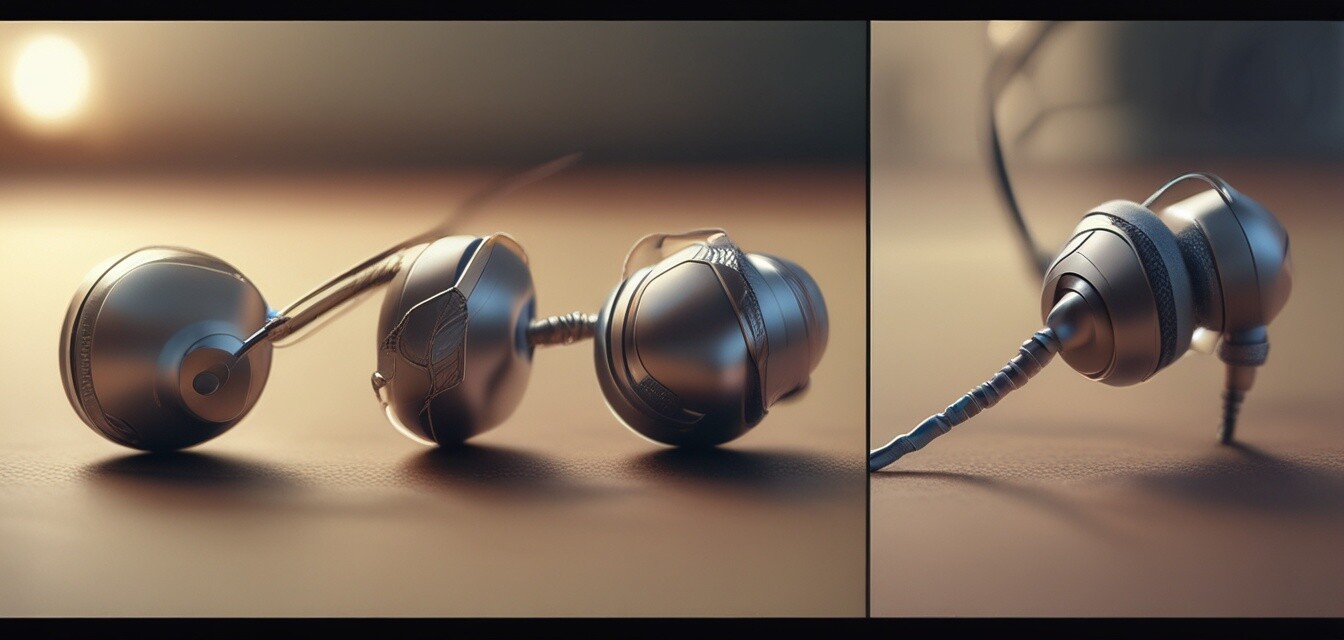
Exploring Dynamic vs. Balanced Armature Drivers
Key Takeaways
- Dynamic drivers are larger and provide a richer bass response.
- Balanced armature drivers excel in clarity and detail across frequencies.
- The choice of drivers impacts the overall listening experience significantly.
- Combining both driver types can yield a more balanced sound profile.
When seeking high-quality audio, understanding the type of drivers used in your headphones is crucial. In this article, we will examine the fundamental differences between dynamic and balanced armature drivers, exploring how each type influences sound fidelity and clarity. Whether you are an audiophile or a casual listener, knowing these driver types can help you make informed decisions when shopping for earbuds. Dive into our buying guides for more insights!
Understanding Driver Types
There are two primary types of drivers used in earbuds: dynamic drivers and balanced armature drivers. Each has distinct characteristics that affect sound quality, comfort, and overall user experience.
Dynamic Drivers
Dynamic drivers function similarly to small loudspeakers. They rely on a magnet and voice coil to produce sound. When current flows through the coil, it creates a magnetic field that moves the diaphragm back and forth, generating sound waves.
Balanced Armature Drivers
Balanced armature drivers are designed to be smaller and more efficient. These drivers utilize a balanced armature system that vibrates between two magnets, providing a precise sound reproduction. This design is typically found in higher-end earphones, particularly favored by audiophiles.
Comparison of Dynamic and Balanced Armature Drivers
| Feature | Dynamic Drivers | Balanced Armature Drivers |
|---|---|---|
| Size | Larger, less compact | Smaller, more compact |
| Sound Profile | Rich bass, warm sound | Detailed highs and mids |
| Efficiency | Less efficient | Higher efficiency |
| Common Uses | General music listening | Professional audio and monitoring |
| Price Range | Affordable | Higher-end |
Impact on Sound Fidelity and Clarity
The drivers significantly influence the overall audio quality of earbuds. Let's explore how these impacts manifest:
- Bass Response: Dynamic drivers excel at producing powerful bass tones, making them ideal for bass-heavy music genres.
- Clarity and Detail: Balanced armature drivers provide clearer sound at higher frequencies, which enhances vocals and instrument details.
- Frequency Range: Dynamic drivers often produce a fuller sound across a wider range of frequencies, while balanced armature drivers focus on precise reproduction.
Choosing the Right Driver for You
Your choice between dynamic and balanced armature drivers depends largely on your personal preferences and listening habits. Consider the following questions:
- What type of music do you usually listen to?
- Are you using headphones for casual listening or professional audio work?
- Do you prioritize rich bass or detailed sound?
Combining Driver Types
Some high-end earbuds utilize a combination of dynamic and balanced armature drivers, which can create a more versatile sound profile. This blend allows for powerful bass while maintaining clarity in the higher frequencies. Explore our audiophile earbuds category for products that incorporate these advanced designs.
Optimization for Listening Experience
To get the most out of your headphones, consider these tips:
Tips for an optimal listening experience
- Use high-quality audio files to take advantage of your headphone's capabilities.
- Experiment with different ear tips to ensure a snug fit for improved sound isolation.
- Adjust your equalizer settings to match your sound preferences.
Conclusion
In summary, both dynamic and balanced armature drivers have their unique strengths that appeal to different types of listeners. Understanding these differences empowers you to select earbuds that suit your tastes and needs. No matter which driver type you choose, you can enhance your auditory experience by paying attention to how these elements affect sound quality.
Pros of Dynamic Drivers
- Thumpy bass response for immersive listening.
- Typically more affordable.
- Wider availability in various models.
Cons of Dynamic Drivers
- Can lack detail in higher frequencies.
- Less efficient regarding power consumption.
Pros of Balanced Armature Drivers
- Excellent clarity in mids and highs.
- Smaller size facilitates a compact design.
- Highly efficient, providing detailed sound.
Cons of Balanced Armature Drivers
- Less impactful bass response.
- Typically more expensive.
Ready to enhance your listening experience? Check out our noise-cancelling headphones and wireless headphones selections today!